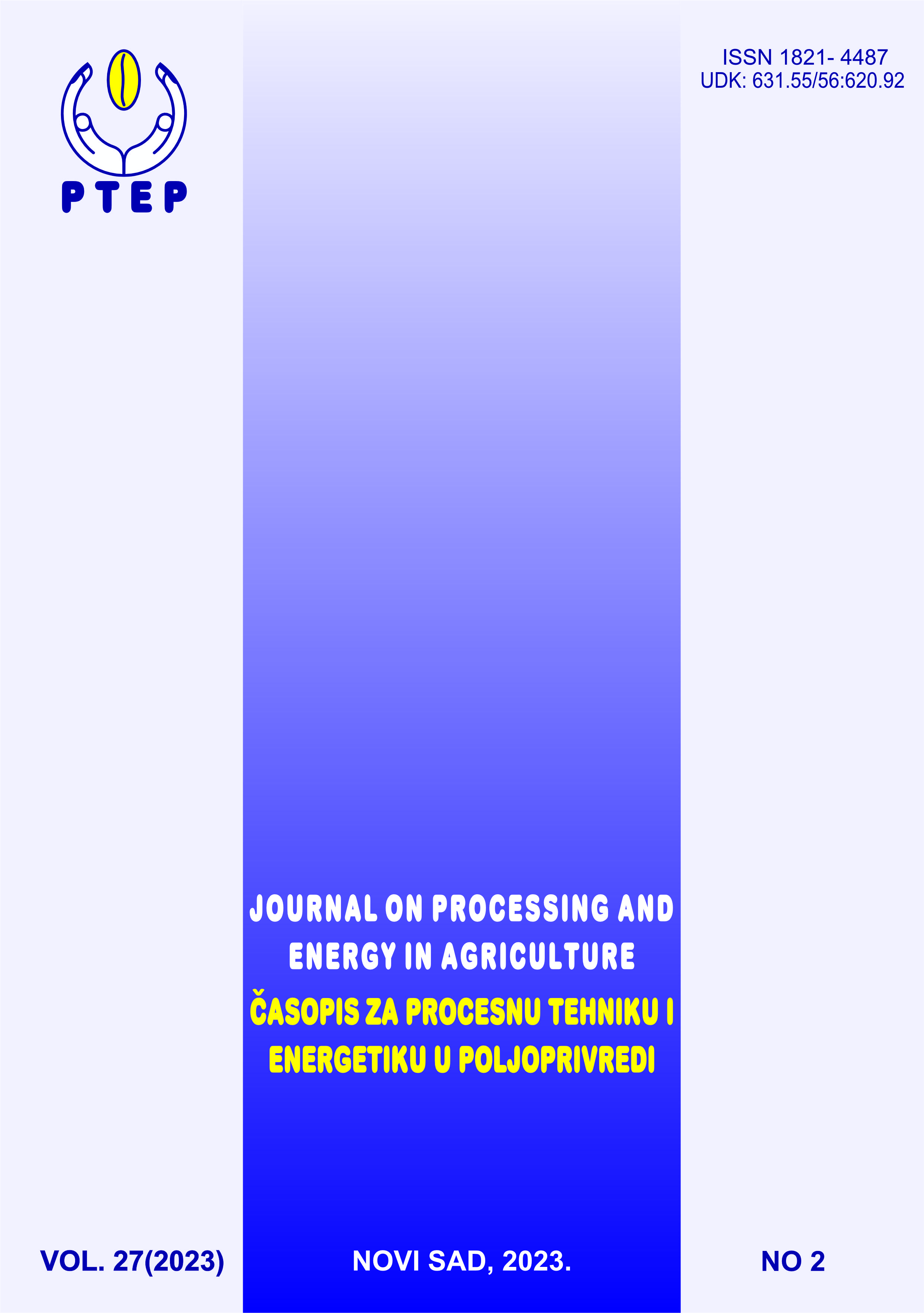RESPONSE OF OILSEED RAPE SEED QUALITY PARAMETERS TO CHEMICAL TREATMENT
Abstract
Rapeseed is a major oilseed crop that has various uses in the food, feed, and industrial sectors. The first condition for successful production and achieving high yields is to provide high-quality seeds, which, in addition to high seed vitality, also implies good seedling protection. The goal is to ensure an optimal number of plants per hectare, which is also a basic prerequisite for achieving high yields. Quality seed treatment has proven to be the best solution for plant protection in the initial stages of development. The seeds were treated with fungicides with the a.i. carboxin + thiram and fluopicolide + fluoxastrobin, as well as an insecticide with a.i. flupyradifuron, and the control was untreated seed. Treatments had a great influence on germination energy, seed germination, number of abnormal seedlings, length and weight of seedlings. The fungicidal fluopicolide + fluoxastrobin treatment had the greatest positive effect on most of the tested parameters, while the carboxin + thiram + flupyradifuron treatment had the greatest negative effect on the seed germination parameter.
References
Elferjani, R., & Soolanayakanahally, R. (2018). Canola responses to drought, heat, and combined stress: shared and specific effects on carbon assimilation, seed yield, and oil composition. Frontiers in Plant Science, 9, 1224. https://doi.org/10.3389/fpls.2018.01224
Ergin, N., Kulan, E.G., Kaya, M.D. (2021). The effects of fungicidal seed treatments on seed germination, mean germination time and seedling growth in safflower (Carthamus tinctorius L.). Selcuk Journal of Agriculture and Food Sciences, 35(2), 139-143. doi:10.15316/SJAFS.2021.240
Food and Agriculture Organization of the United Nations (accessed on 16 Novemner 2023). https://www.fao.org/faostat/en/#data/QCL.
Haj Sghaier, A., Tarnawa, Á., Khaeim, H., Kovács, G.P., Gyuricza, C., & Kende, Z. (2022). The effects of temperature and wa-ter on the seed germination and seedling development of rapeseed (Brassica napus L.). Plants, 11, 2819. https://doi.org/10.3390/plants11212819
Inđić, D., Vujaković, M., Berenji, J., Vuković, S., Popov, V., Glišić, S., & Bajčev, M. (2008). Osetljivost genotipova uljane tikve golice prema insekticidima za tretiranje semena. Zbornik rezimea, 9. Savetovanje o zaštiti bilja, Zlatibor, 92-93.
ISTA (2018). International Rules for Seed Testing. International Seed Testing Association, Switzerland.
Krstić, M., Ovuka, J., Gvozdenac. S., Butaš, D., Ćuk, N., Babec, B., & Cvejić, S. (2022). Seed vitality of sunflower inbred lines as in-fluenced by meteorological factors and seed size. Journal on Processing and Energy in Agriculture, 26(3-4), 106 – 110. doi:10.5937/jpea26-42032
Krstić, M., Mladenov, V., Banjac, B., Babec, B., Dunđerski, D., Ćuk, N., Gvozdenac, S., Cvejić, S., Jocić, S., Miklič, V., & Ovu-ka, J. (2023). Can modification of sowing date and genotype selection reduce the impact of climate change on sunflower seed production? Agriculture, 13(11), 2149. https://doi.org/10.3390/agriculture13112149
Kuhar, T.P., Stivens-Young, L.J., Hoffman, M., & Taylor, A. (2002). Control of the corn flea beetle and Stewart´s wilt in sweet corn with imidacloprid and thiamethoxam seed treatments. Crop Protection, 21(1), 25-31. https://doi.org/10.1016/S0261-2194(01)00056-4
Mrđa, J., Radić, V., Prole, S., Jokić, G., Ostojić, B., Butaš, D., & Miklič, V. (2009). Effect of storage period and chemical treatment on sunflower parents lines seedling dry matter content. Selekcija i semenarstvo, 15(4), 55-62.
Mrđa, J., Crnobarac, J., Dušanić, N., Jocić, S., & Miklič V. (2011a). Germination energy as a parameter of seed quality in dif-ferent sunflower genotypes. Genetika, 43(3), 427-436. https://doi.org/10.2298/GENSR1103427M
Mrđa, J., Jokić, G., Prole, S., Radić, V., Stojšin, V., & Miklič V. (2011b). Sunflower seedlings dry matter content as affected by chemical treatment and storage lenght. Ratarstvo i povrtarstvo, 48(2), 397-402. doi:10.5937/ratpov1102397M
Panozzo, A., Barion, G., Moore, S.S., Cobalchin, F., Di Stefano, A., Sella, L, & Vamerali, T. (2023). Early morpho-physiological response of oilseed rape under seed applied Sedaxane fungicide and Rhizoctonia solani pressure. Fron-tiers in Plant Science, 14, 1130825. doi:10.3389/fpls.2023.1130825
Poštić, D., Štrbanović, R., Broćić, Z., Tabaković, M., Đurić, N., Pavlović, N., & Stanisavljević, R. (2022). Assessment of seed quality of different cabbage lots during aging. Journal on Processing and Energy in Agriculture, 26(1), 23-26. https://doi.org/10.5937/jpea26-36458
Poštić, D., Štrbanović, R., Tabaković, M., Đurić, N., Živković, I., Milivojević, M., & Stanisavljević, R. (2023). Changes in qual-ity indicators of different cucumber hybrid seeds during five years of aging. Journal on Processing and Energy in Agri-culture, 27(1), 4-7. https://doi.org/10.5937/jpea27-42793
Tamindžić, G., Nikolić, Z., Danojević, D., Župunski, V., Ignjatov, M., Petrović, D. & Petrović, G. (2013). Effect of insecticides on seed germination and seedling growth parameters of maize inbred lines. Zaštita bilja, 64(2), 101-109.
Tamindžić, G., Nikolić, Z., Savić, S., Milošević, D., Petrović, G., Ivanović, D., & Ignjatov, M. (2016). Seedling growth of maize (Zea mays L.) inbred lines affected by seed treatment with pesticides. Journal of Agricultural Sciences, 61(3), 227-235. https://doi.org/10.2298/JAS1603227T
Vujošević, B., Kešelj, J., Ilić, N., Mirosavljević, M., Stanisavljević, D., Mitrović, B., & Čanak, P. (2017). Effect of different seed treatments on maize seed germination parameters under optimal and suboptimal temperature conditions. Ratarstvo i pov-rtarstvo, 54(3), 99-103. https://doi.org/10.5937/ratpov54-14241
Wittkop, B., Snowdon, R.J., Friedt, W. (2009). Status and perspectives of breeding for enhanced yield and quality of oilseed crops forEurope. Euphytica, 170, 131–140. https://doi.org/10.1007/s10681-009-9940-5

